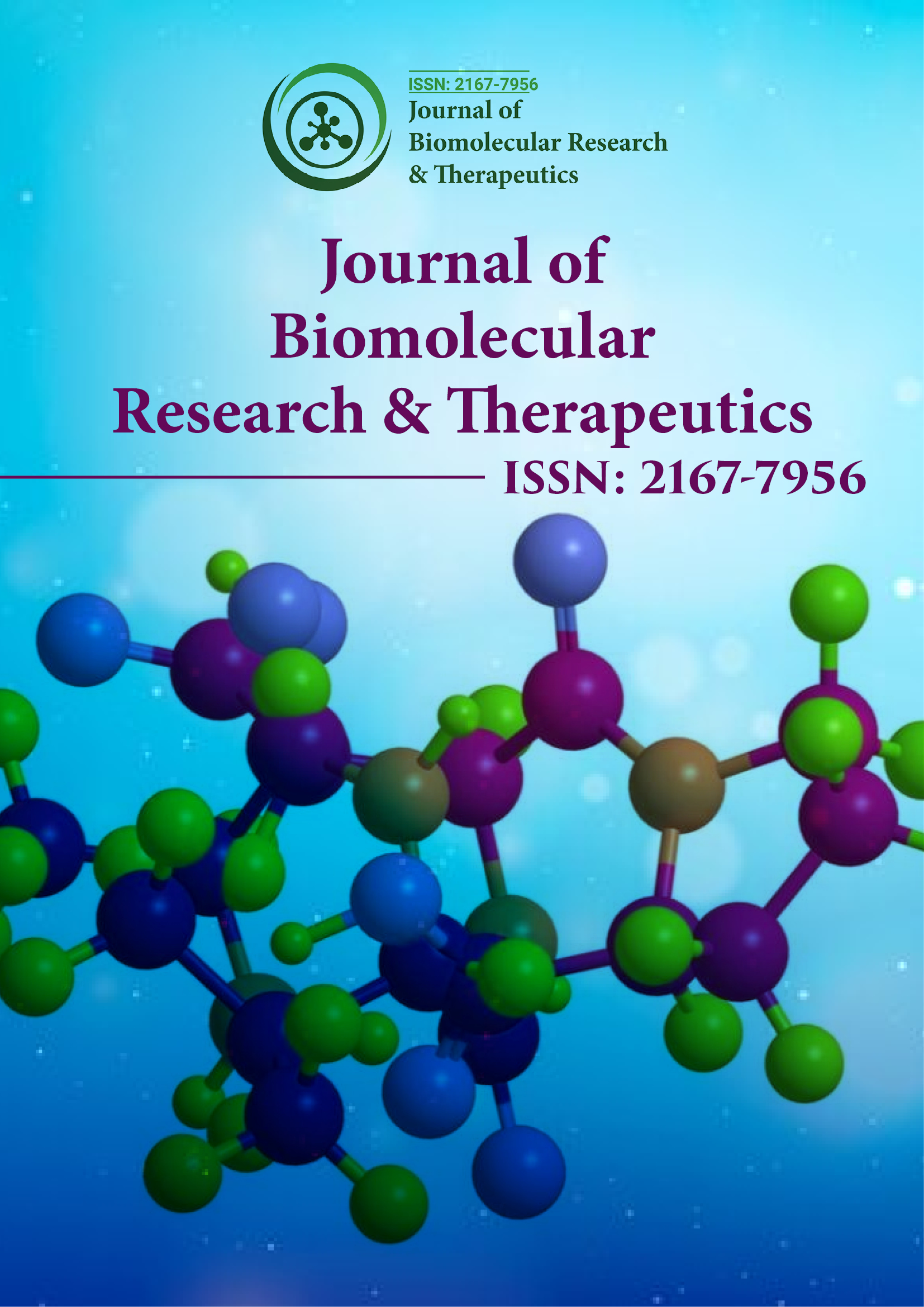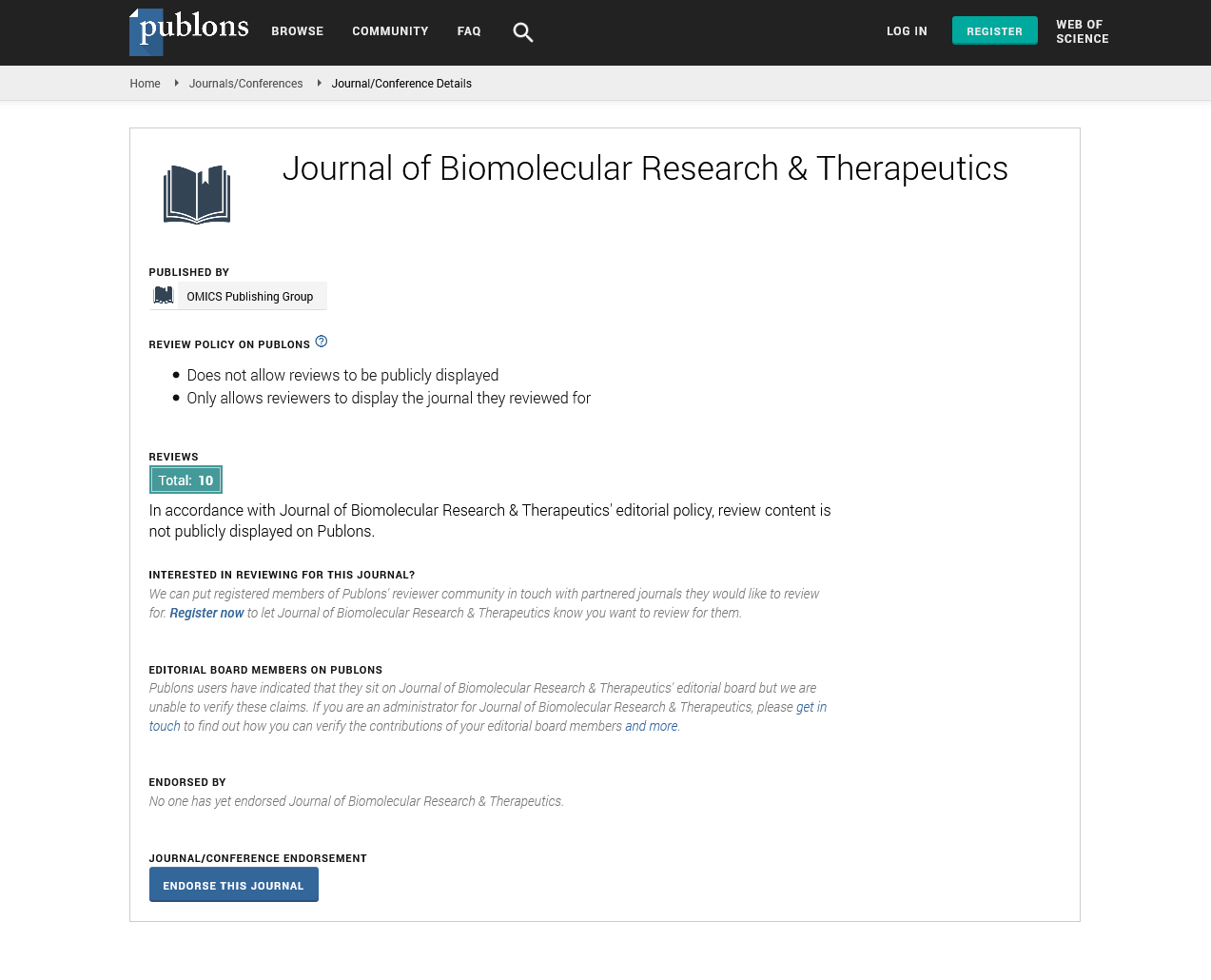PMC/PubMed Indexed Articles
Indexed In
- Open J Gate
- Genamics JournalSeek
- ResearchBible
- Electronic Journals Library
- RefSeek
- Hamdard University
- EBSCO A-Z
- OCLC- WorldCat
- SWB online catalog
- Virtual Library of Biology (vifabio)
- Publons
- Euro Pub
- Google Scholar
Useful Links
Share This Page
Journal Flyer

Open Access Journals
- Agri and Aquaculture
- Biochemistry
- Bioinformatics & Systems Biology
- Business & Management
- Chemistry
- Clinical Sciences
- Engineering
- Food & Nutrition
- General Science
- Genetics & Molecular Biology
- Immunology & Microbiology
- Medical Sciences
- Neuroscience & Psychology
- Nursing & Health Care
- Pharmaceutical Sciences
Perspective - (2022) Volume 11, Issue 9
Recent Advances and Photodynamic Therapy for Basal Cell Carcinoma
Roberto Ricci*Received: 02-Sep-2022, Manuscript No. BOM-22-18348; Editor assigned: 05-Sep-2022, Pre QC No. BOM-22-18348(PQ); Reviewed: 19-Sep-2022, QC No. BOM-22-18348; Revised: 26-Sep-2022, Manuscript No. BOM-22-18348(R); Published: 03-Oct-2022, DOI: 10.35248/2167-7956.22.11.231
Description
The most prevalent type of cancer in the world is Basal Cell Carcinoma (BCC). The combination of numerous environmental, phenotypic and genetic variables leads to the development of BCC. Whereas, the advancements, little is known about the biology of BCC and the mechanisms that lead to resistance to systemic therapy. It explains the histological and molecular characteristics of BCC, including microRNA deregulation, with an emphasis on the molecular underpinnings of systemic treatments for BCC. Over the past ten years that discussed the genetic and phenotypic changes in BCC as well as the mechanism of resistance to the inhibitors of the pathway. A new field is developing around the role of miRNAs in BCC resistance to systemic treatments. The most prevalent type of skin cancer in the world is Basal Cell Carcinoma (BCC). Due to its low mortality rate, BCC is not typically included in cancer registries however, after analyzing using data from insurance registries and official statistics in the United States. UV radiation is regarded as the main environmental risk factor for BCC, in addition to genetic variables that affect BCC propensity. Particularly during youth or adolescence, acute intermittent exposure is linked to a greater lifetime risk of BCC. This risk is further influenced by the cumulative exposure effect and the capacity of the skin to tan. Indoor tanning has been shown to be another risk factor. Numerous epidemiological studies have linked photosensitizing medications to an increased risk of BCC however there is no dose-response relationship. Ionizing radiation exposure increases the incidence of BCC, especially at the exposure site. Numerous micro-injuries, scars, chronic lower limb ulcers, and continuous exposure to chemical agents are additional risk factors. Using PCR-based technologies, a more accurate molecular characterization of the BCC phenotype has been produced in recent years. Particularly, it has been noted that skin cancers have deregulated expression of short non-coding RNAs, such as microRNAs (miRNAs). The binding affects whether a miRNA plays an oncogenic or tumor suppressive role and has an impact on cell differentiation or proliferation, apoptosis and oncogenes is depending on the target. Numerous cancers including non-melanoma skin cancer have been shown to express miRNAs in an uncontrolled manner. The most challenging cases are those that are technically treatable but have substantial morbidity or functional impairments as a result of the surgery. It might be difficult to know when surgery is appropriate and when it should be avoided. As with other metastatic solid tumors the definition of metastatic BCC includes distant dissemination to another organ or no regional lymph node involvement and skin involvement. Finding people at risk for advanced BCC is still difficult and research into what constitutes "aggressive conduct" is on-going. Some individuals may initially have relatively slow-growing or typical BCCs that recur locally before becoming untreatable or they may develop metastases. The most prevalent kind of cancer is Basal Cell Carcinoma (BCC). BCC can cause severe morbidity due to its destructive local spread, despite the fact that it rarely leads to mortality or metastatic disease. The high frequency of BCC and the accessibility of the skin have made it possible to characterize the pathophysiology, clinical presentation and histology in great detail. Surgical procedures such as electrodessication and curettage, surgical excision and surgery continue to be the mainstay of therapy. Certain low-risk BCCs can be effectively treated with topical treatments. When surgery is not an option, radiation therapy is an alternative. The creation of focused medicines for severe disease has been made possible by understanding of the genetic alterations for BCC. For the treatment of BCC, a variety of surgical and medicinal procedures are available. The most popular treatments for BCCs with a low risk of recurrence are surgical excision or electrodessication and curettage. Cryosurgery, intralesional injection or imiquimod, as well as photodynamic therapy for low-risk lesions are additional less common treatments. The best success rate for surgical removal is achieved by surgery.
Citation: Ricci R (2022) Recent Advances and Photodynamic Therapy for Basal Cell Carcinoma. J Biol Res Ther. 11:231.
Copyright: © 2022 Ricci R. This is an open access article distributed under the terms of the Creative Commons Attribution License, which permits unrestricted use, distribution, and reproduction in any medium, provided the original author and source are credited.

